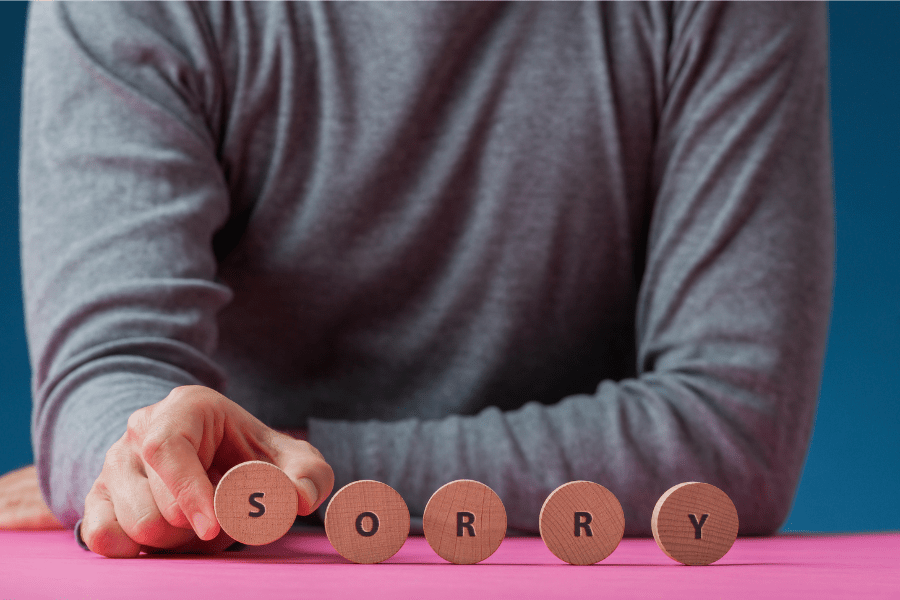Strengthen Your Relationship: Know Your Apology Language

If you have heard the five love languages, it would be easy for you to understand the concept of apology languages. An apology language is your preferred way to express and to receive an apology. Well, maybe you never think deeply about it, but everyone has a preferred way of expressing and receiving an apology.
For some of us, it might be enough to receive a simple “I’m sorry”. But for some, verbalizing the desire to change is the best way to express an apology. So, let us learn more about apology languages and how knowing yours strengthen relationships.

The Five Apology Languages
Just like the love languages, apology languages became a thing because of Gary Chapman, Ph.D. He wrote about it in The Five Apology Languages with Jennifer Thomas. These languages are different ways of telling or showing you are sorry.
1. Expressing Regret
First, in this apology language, a simple apology is enough. It is an admission of guilt and shame for making a mistake or causing pain to a person. “Expressing Regret” is owning to your mistakes and does not attempt to make excuses or deflect blame. It gets right to the point provided that the apology is sincere and comes from the heart.
“Expressing Regret” type of person would say “I’m so sorry. I feel ashamed for how I hurt you“ when expressing an apology.
2. Request Forgiveness
If you are the type of person who asks for forgiveness or wants to hear a person asking for forgiveness, this is your apology language. It is important to note that requesting forgiveness is different from demanding forgiveness.
For instance, you typically say “Our friendship is really important to me. Will you forgive me?“ when asking for forgiveness. Not “I’m sorry. Forgive me” as this seems like you are demanding the person to just forgive you.
3. Accept Responsibility
Thirdly, for a person who speaks this apology language, a person who made a mistake must admit fault. Being sincere in your apology means allowing yourself to be weak, and admitting that you make mistakes. They have to accept responsibility for their own failures.
A person with this type of apology language would say, “I know that my actions were totally unacceptable. I own that.”
4. Make Restitution
If a person has “Make Restitution” as a primary apology language, saying “I’m sorry” is not enough. They believe that in order to be sincere, the person who is apologizing should justify their actions. And, they must show strong efforts to make amends.
Tip: If your partner has this language, knowing their main love language can help you make restitution.
5. Planned Change
Lastly, in this type of apology language, the person who did wrong must verbalize their desire to change. With this type, an apology must be accompanied by the intention to change their behavior to avoid repeating the mistake made.
For instance, if apologizing a typical person who has this a primary language would say, “I will not do this again. I’ll come up with ways to avoid this in the future.”
How does it strengthen your relationships?
On a final note, everyone has a different primary apology language like how we differ in love languages. Thus, knowing your primary apology language will help you understand how to express your apology in the best ways possible.
Also, making amends, forgiving, repairing the injury, and growing together are important.
Mistakes and misunderstandings are common challenges in all kinds of relationships. So, knowing your primary apology language will help you overcome those challenges and heal together.
If you want to know yours, you can take a quiz on Chapman’s website.
Rosella also called as Sella by her friends, is a proud "iskolar ng bayan," studying Journalism at Polytechnic University of the Philippines. She loves to read and express herself through writing. She believes that mind and words are powerful, so she aspires to be someone who uses them to amplify the voice of others.











